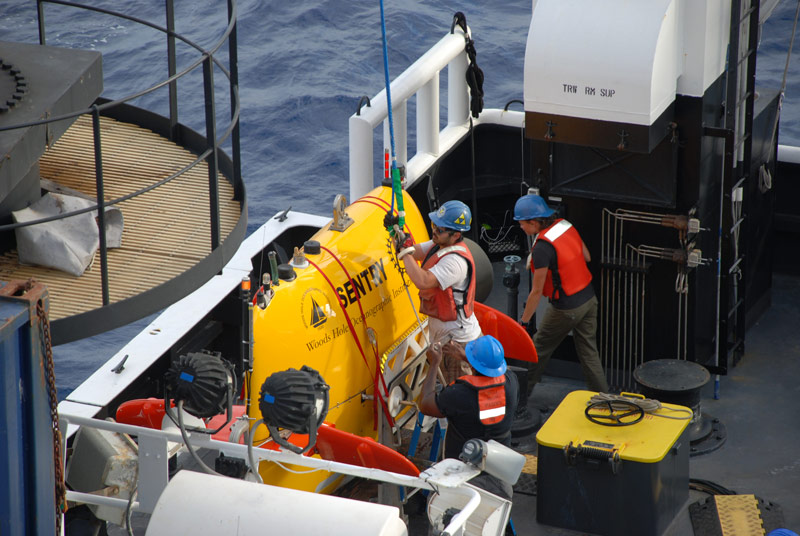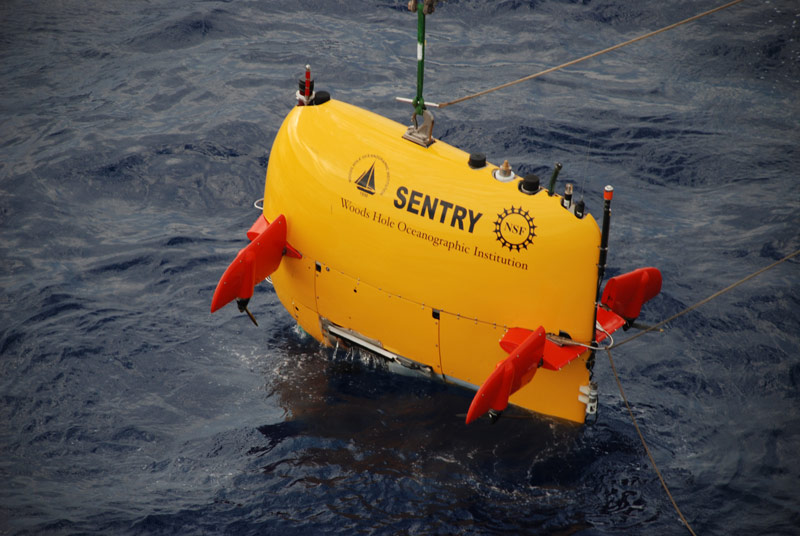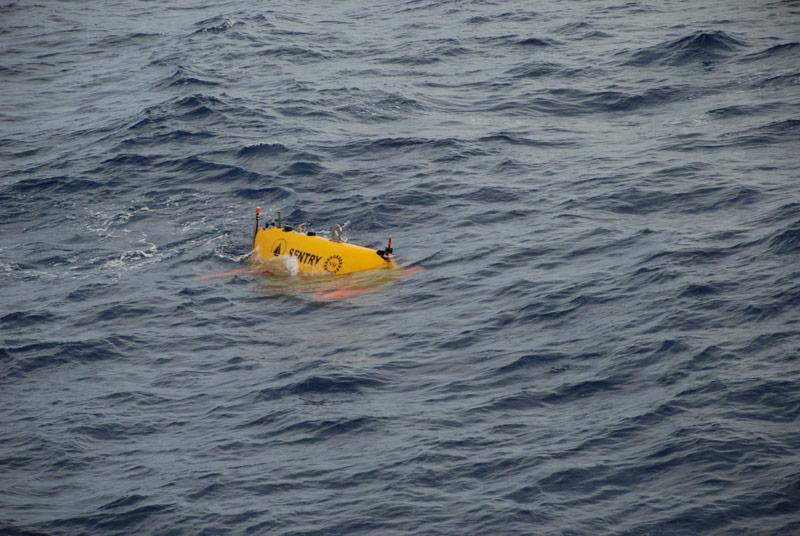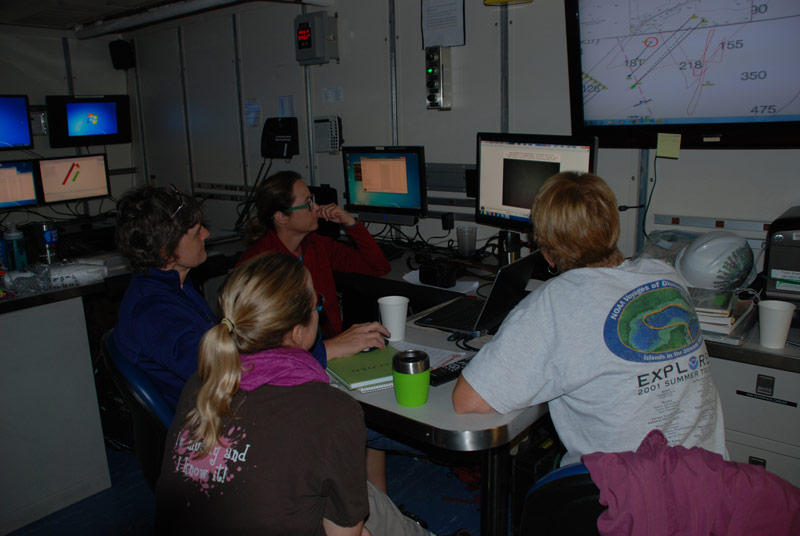
By Dr. Martha Nizinski, NOAA Office of Science and Technology, National Systematics Laboratory, Chief Scientist
Katie Wagner, NOAA Office of Ocean Exploration and Research, Web Coordinator
August 28, 2016

The AUV team prepares Sentry for deployment. Image courtesy of the Exploring Carolina Canyons expedition. Download larger version (jpg, 3.8 MB).
The team’s efforts to overcome the challenges of the Gulf Stream have paid off. After heading farther south to an area with a lighter current and improving the stability of Sentry’s transceiver pole, today we had a successful dive exploring Pamlico Canyon.
Sentry and science leads met early in the morning to draft a mission plan. We consulted multibeam maps showing depth and slope to inform the target selection (the area where autonomous underwater vehicle (AUV) Sentry would be programmed to operate). An interesting geological feature, at approximately 1,000 meters depth, was selected as the target. This target shares several characteristics with areas where we have found corals previously. By choosing a location with high slope, in a mid-depth range of 900 to 1,700 meters, and oriented into the current, we were hedging our bets that we would find coral.

Sentry lowered into the water. Image courtesy of the Exploring Carolina Canyons expedition. Download larger version (jpg, 4.1 MB).
The AUV Sentry was launched successfully around 0800 as many watched from their chosen vantage points around the ship to get a glimpse of the AUV being lifted over the side of ship and lowered into the water. The science team waited patiently (and worked on other projects), while Sentry flew its programmed path along the canyon wall.
Decked out with a variety of sensors, Sentry collected side-scan sonar data, measured environmental variables such as dissolved oxygen, and snapped a still photograph once every three seconds. After a 10.2-hour dive, traveling 12.8 kilometers, and using 5.7 kilowatt hours of power (enough to run a TV for 50 hours), Sentry popped up at the surface and was recovered back on the deck of the ship. First mission accomplished!

Sentry resurfaces after the 10.2-hour dive. Image courtesy of the Exploring Carolina Canyons expedition. Download larger version (jpg, 4.5 MB).
As the data download began, the excitement continued to build as the science team waited to look over the data. In total, Sentry took 9,648 photographs! The science team combed through the images, keeping an eye out for corals in particular but also cephalopods, fishes, and crustaceans. Images with corals were flagged for closer review and detailed analysis later on.
At first glance, midwater fauna, soft-sediment benthic habitats, coral communities on canyon walls (yes, corals!), various fish and sessile creatures, and even a few cephalopods hiding in the shadows and sediments were observed in the images. There was no time to waste; we needed these preliminary results to plan the next dive. A few members of the Sentry team worked to secure the AUV for the night, while others downloaded data and designed the mission plan for Sentry’s next dive.

The science team reviews the first 9,648 images collected from Sentry in Pamlico Canyon. Image courtesy of the Exploring Carolina Canyons expedition. Download larger version (jpg, 3.8 MB).
The first Sentry dive is scored as a success! Today we got our first glimpse of the habitats and organisms found in Pamlico Canyon. We confirmed the presence of coral communities in this canyon. We are off to a good start and are looking forward to seeing the images from the next deployment in Pamlico Canyon.